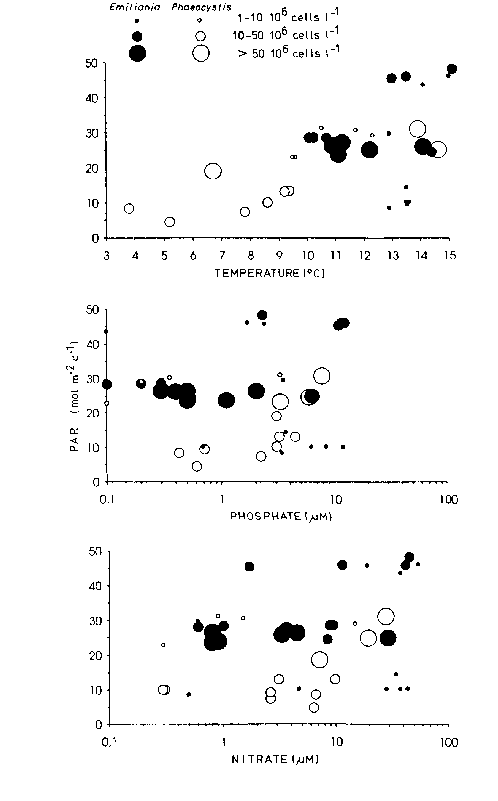Mesocosm Experiments to Investigate Phytoplankton Competition
Several years of mesocosm experiments in the Norwegian fjords near Bergen
(where Ehux is a common part of the phytoplankton succession) looked
at the effects of nutrient and other factors on phytoplankton species
composition. In particular, nutrients were added in different amounts and
different ratios to different bags, and the resulting phytoplankton species
numbers were counted. The mesocosm bags experienced natural temperatures
and irradiances (they were suspended in the fjord water). The polyethylene
mesocosm bags (90% light transmittance) were 4 metres deep, 2 metres in
diameter, and constantly stirred. Each bag was initially filled by pumping
in unfiltered fjord water, and so natural communities of zooplankton,
bacteria and viruses were introduced at the beginning of each experiment.
See (Egge & Hemidal, 1994) for a full description of the experimental
set-up.

Many phytoplankton species were present in the bags, but the abundances of
just two have been plotted against various parameters, in the diagram shown
above. Concentrating solely on Ehux cell numbers, the diagram shows
no correlation with nitrate, greater Ehux numbers at low phosphate,
and a tendency for blooms to occur at higher temperatures and irradiances.
Irradiances are averaged over the previous 5 days. Temperature and light
will be highly correlated in the shallow mesocosm bags, and it is thought
likely that the correlation with high temperature is probably because
Ehux does better at high light, rather than because it competes
better at high temperatures.
Ehux
home page
